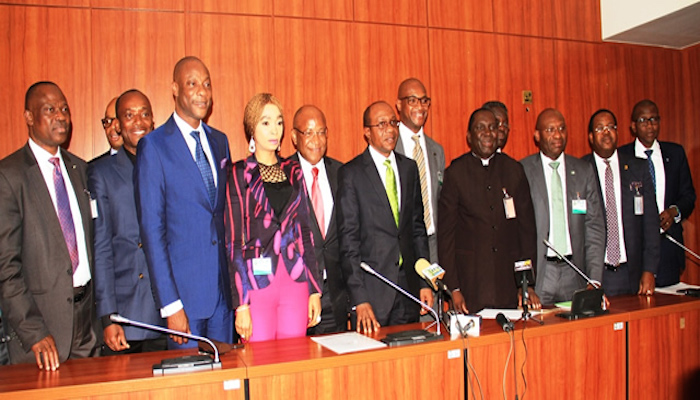The CBN Governor, Godwin Emefiele has often been seen as the villain of Nigerian forex crisis following several failed exchange rate policies, flip-flops and his general handling of the economy.
It appears, though that Mr Emefiele is now going on the offensive, defending some of his policies and letting Nigerians know how hard he has worked to bring the economy out of recession.
Apart from defending himself, he has also blamed Nigerian banks for not implementing some of his policies.
In an “exclusive interview with Thisday”, Mr Emefiele was paraphrased as accusing commercial banks of “round tripping”
However, he said instead of lending the money to the real sector, “most of that money may have been eventually round-tripped into the foreign exchange market and it put a lot of pressure on the forex reserves.
The article did not reveal if he named any specific bank suggesting that all banks may have engaged in round tripping. Ironically, it’s his policy of sticking to an exchange rate that kept the value of the naira artificially high at N197 against the dollar for over a year that has caused some of the biggest forex arbitrage Nigeria has seen in decades.
He also suggested that one of the reasons why some of his policies did not work was because banks failed to implement it. For example, despite reducing cash reserve ratio banks still failed to lend to the “real sector” whom he feels need it the most. Of course he failed to mention that banks have their own risk appetites and won’t lend to a sector they feel won’t guarantee a return of and on their money.
Here’s Mr Emefiele again;
“When we (Monetary Policy Committee) met again in September, because we didn’t see the injection of liquidity to support the real sector of the economy, we decided that we were going to reduce the CRR again from 25 per cent to 20 per cent.
“But we said that through the reduction in CRR that banks should identify specific projects in agriculture, manufacturing, etc, that we would release whatever amount they needed to support this.
“Unfortunately, what we found was that instead of the banks sending us projects that were meant for the real sector and for agriculture, what they did was that they sent us projects meant to finance hotels, projects meant to finance hospitals, and others that we didn’t consider to be real sector projects.
“Those of them that brought projects in the manufacturing sector just brought projects that they were refinancing in their balance sheets and we felt that was not right. But you will find that in due course, and I mean in the next couple of weeks, some disbursements would be made to core agriculture projects.
“That is those who are financing large scale production of rice, tomatoes, diary, wheat and maize. These financing would represent our own attempt to ensure that we grant loans to companies that are serious about agriculture and core manufacturing. So, these were direct attempts that we used through the banks,”
